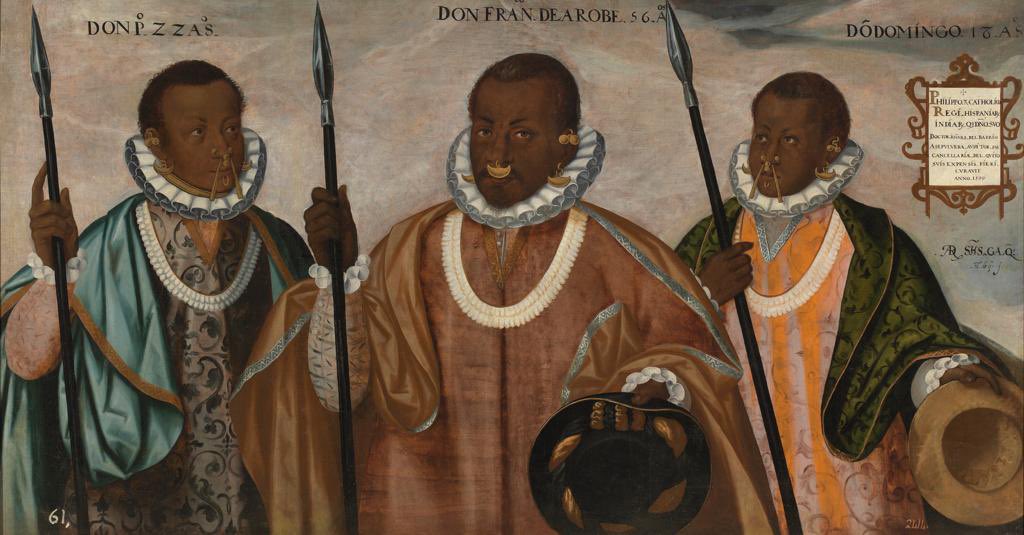Andrés Sánchez Gallque, nacido en Quito a finales del siglo XVI, fue uno de los primeros pintores indígenas reconocidos dentro de la Escuela Quiteña. Formado en la Escuela de San Juan Bautista bajo la tutela del franciscano Jodoco Ricke y más tarde como discípulo de Fray Pedro Bedón, destacó como un hábil dibujante y pintor de caballete. Su estilo combinó influencias europeas con un fuerte sello local, convirtiéndose en pionero en la representación artística dentro del arte colonial ecuatoriano.
Su obra más célebre es Los negros de Esmeraldas (1599), conservada en el Museo del Prado, donde retrató con gran detalle a Francisco de Arobe y sus hijos, jefes afrodescendientes de Esmeraldas. Este óleo, inusual por estar firmado y fechado, refleja tanto el talento técnico de Sánchez Gallque como el contexto social y cultural de su tiempo. Además, se le atribuyen varias pinturas de carácter religioso, entre ellas retratos de santos y escenas bíblicas, que consolidaron su prestigio como uno de los artistas más representativos de los inicios de la tradición pictórica quiteña.

Andrés Sánchez Gallque, born in Quito at the end of the 16th century, was one of the first recognized indigenous painters within the Quito School. Trained at the School of San Juan Bautista under the tutelage of the Franciscan Jodoco Ricke and later as a disciple of Fray Pedro Bedón, he stood out as a skilled draftsman and easel painter. His style combined European influences with a strong local influence, becoming a pioneer in artistic representation within Ecuadorian colonial art.
His most famous work is The Blacks of Esmeraldas (1599), housed in the Prado Museum, in which he portrayed in great detail Francisco de Arobe and his sons, Afro-descendant chiefs of Esmeraldas. This oil painting, unusual for its signature and date, reflects both Sánchez Gallque’s technical talent and the social and cultural context of his time. In addition, several religious paintings are attributed to him, including portraits of saints and biblical scenes, which consolidated his prestige as one of the most representative artists of the early Quito pictorial tradition.
